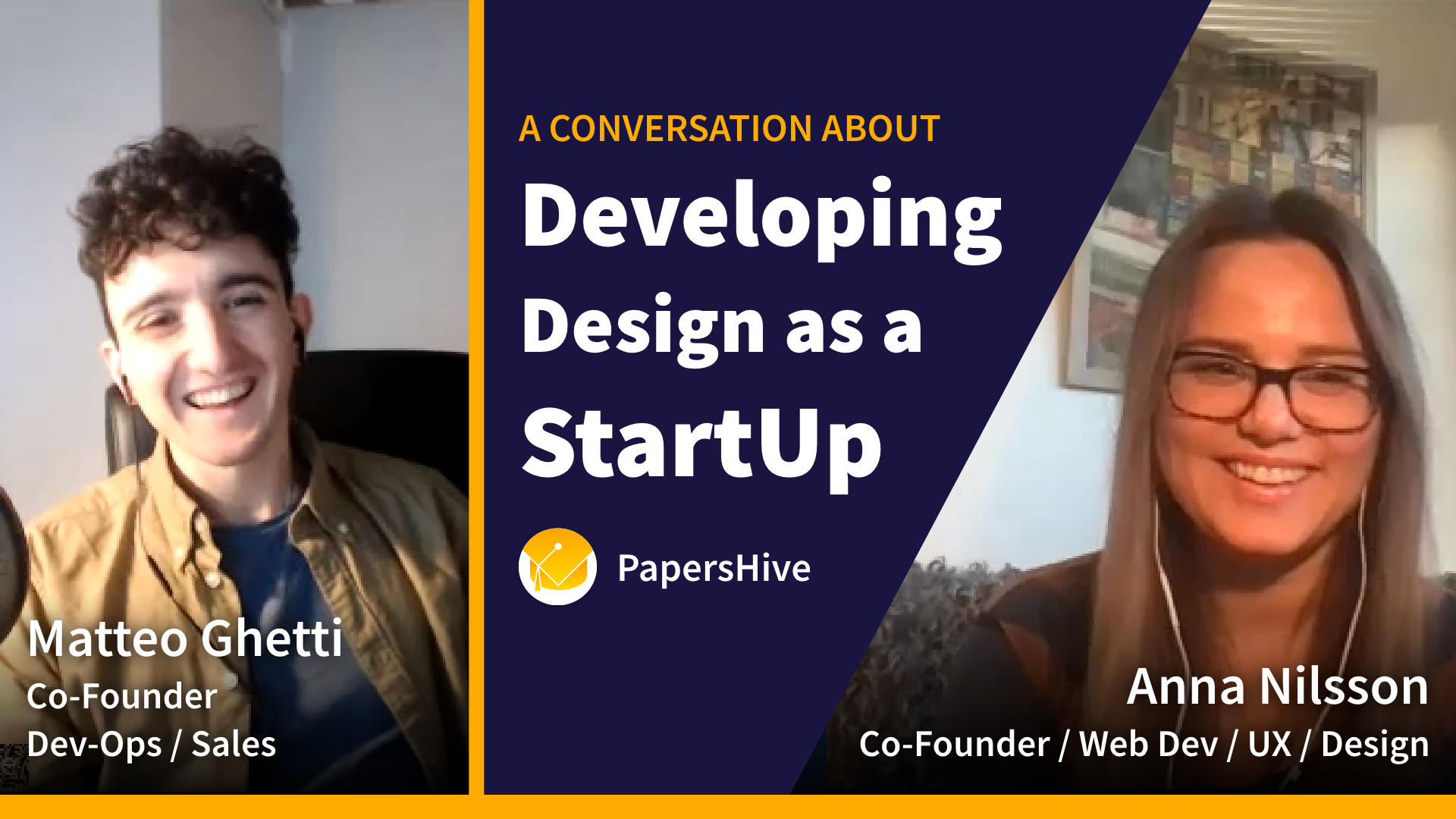Some Thoughts About the Design Process as a StartUp.
Anna Nilsson, Co-Founder of PapersHive, with a focus on Web-development and design, is responsible for the user experience of the portal. This conversation touches on a couple of the main design principles she uses in her every day work.

In one of our recent surveys with out customers we noticed that a thing that they really enjoyed with PapersHive was its simplicity.
– I think that every designer that studies today is taught to work with simplicity and that less is more. A user will only see one thing at a time and you have to consider that when you are creating a design. When we were looking at our competitors, we could see that the solutions were very complicated and they required a lot of learning in order to start to use them.
They are already scared because they know that tools are difficult to learn. This forces us to make simplicity our core value.
– I think one of our main problems entering this field is that people are used to the tools that they already have and they don't want to learn a new tool. They are already scared because they know that tools are difficult to learn. This forces us to make simplicity our core value. It should be easy. You should understand it the moment you enter the portal.
Regarding the designing process, how do you approach it?
– One of the things that often happens is that, you want to talk about the solution to the problem rather than the symptoms of the problem. In that way it is very easy to start thinking, okay, we have to have a button that does X instead of thinking...
Can you make a button that does X?
– My question is always, what does it need to do? Or, in other words, what is the problem we're trying to solve with that? That is always my main question. Because that question leads to something else, do we really need a button for that or can we solve it in another way?
– Everything you introduce to a page is going to disturb all of the other actions within that page.
– Another thing that happens often is that a user says that they want a certain functionality, but we don't always understand what the thing that they are actually trying to solve is. Then the three of us try to guess what the actual problem is.
– And that's not the easy task to understand because also, which I think Matthew has noticed talking to users. You only have a certain amount of time to discuss with somebody. You cannot always ask exactly what they want because they don't always have the attention span to give us all the answers to their actual questions.
– So we have to translate what is the actual problem. Even when somebody is asking for something and they say, I want this particular functionality, we have to consider, what is the actual problem they're trying to solve? Why do they need that functionality? And I think that's the core of trying to make it simple. If we're going back to that question.
How does the iterative design process take place?
– So first I try to look at other solutions. I look at other search engines, other reference managers, design forums, and I just try to spark ideas and try to be like, okay, they put it like this and they put it like that. And then I try to make some drawings, and just put it down together.
If you have an idea, you have to try it out and you have to follow your idea to completion.
– I usually use Adobe XD to quickly sketch prototypes. I just put down the functionalities and experiment with maybe five different frames that are quite different from each other. I really follow my own mind in this. I don't ask a lot of people at this creative stage in the process, and this is quite important. If you have an idea, you have to try it out and you have to follow your idea to the completion and you cannot ask people too many questions because they will sometimes crush your idea because they don't understand it until it's completely finished.
– So it is important to experiment and it's important to finalize it to 100% and at that point you can show it to people. I show it to my team at PaperHive, to you and Stergios, then I get feedback from you guys.
– In a way, it's always better to be closer to the competitors because that will make the users feel safe. When it comes to where things are located you should always look at what is on the market. The user will always look in the top right corner for finding user settings and this kind of things.
They are not coming to our tool because they love our tool. They're coming to our tool because they want to get their work done faster.
I think one of the best examples is the advanced search builder that we built recently. A lot of our customers are experienced in PubMed, and we created one that was better in a sense, more logical. But it was too different and then we had to backtrack and imitate the design that PubMed had.
– Exactly. Because they they don't want to change their behaviors. It takes a lot of time and effort to change behaviors. So they want to keep doing what they have always been doing and they just want to do their work.
– They are not coming to our tool because they love our tool. They're coming to our tool because they want to get their work done faster. They don't care about our tool, at all. They just want to use it to simplify a part of their work and in that want things to be where they are supposed to be and things to function the way they are used for it to function.
– And after that we can introduce a couple of things that will simplify their everyday work.

Everything starts with search.
With a smart suite of search tools to help you find the information you need, when you need it. Enhance your Search Experience with PapersHive Today!
Contact Us